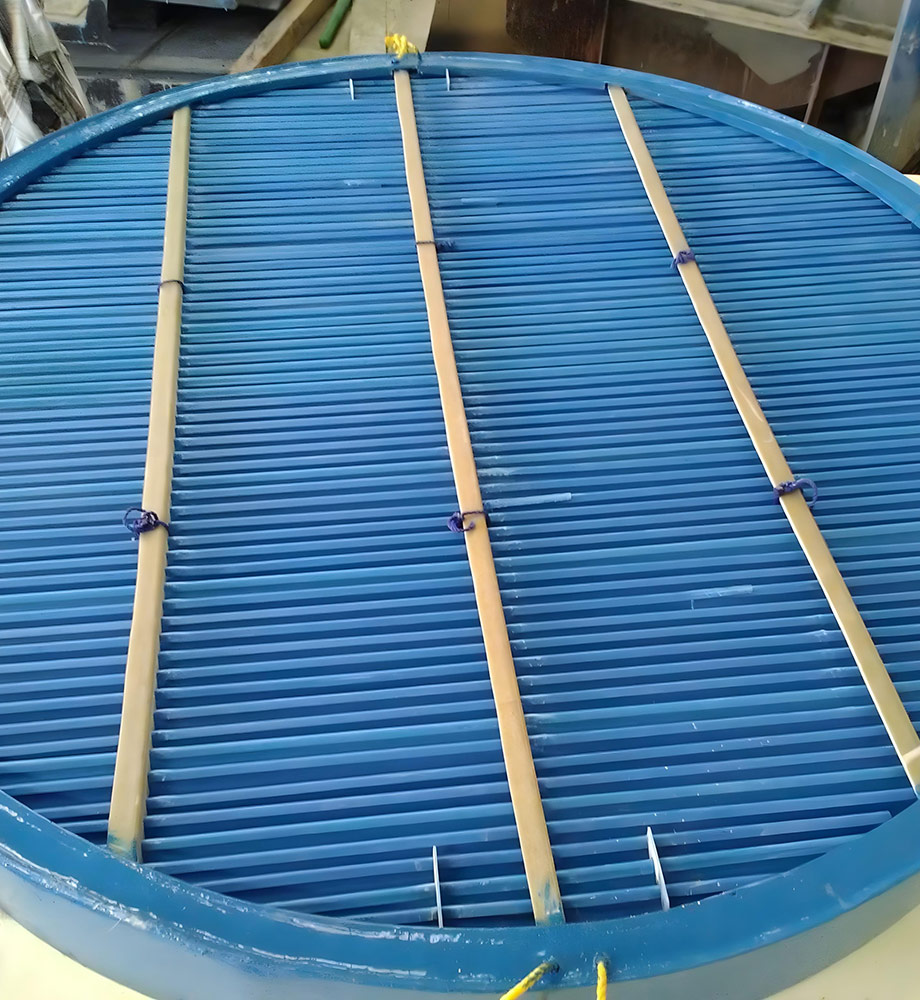Key Features
- High Efficiency: Removes fine mist and aerosols (>99% droplet capture).
- Corrosion-Resistant FRP: Ideal for acid gas scrubbers and harsh environments.
- Low Pressure Drop: Engineered vane geometry or mesh to minimize energy loss.
- Modular Design: Packable sections that fit any scrubber cross-section.
- Easy Maintenance: Fiberglass doesn’t swell or corrode; mesh pads can be washed.
Benefits
- Protects Downstream: Prevents corrosive or toxic droplets from damaging fans, ducts or emitting into the air.
- Improves Performance: Keeps scrubber packing dry, maintaining high gas-liquid contact efficiency.
- Long Service Life: FRP withstands continual wetting and chemical exposure far better than metal.
- Cost Savings: Less frequent replacement than metal demisters in corrosive service.
Applications
- Wet Scrubbers: Final stage mist eliminators in gas scrubbers (acid gas, ammonia, chlorine, etc.).
- Cooling Towers: Drift eliminators (similar function) in FRP cooling tower pack.
- Chemical Reactors: Emissions treatment to capture solvent or acid mists.
- Odor Control: In wastewater headworks (removing odorous aerosols).
Technical Specifications
- Configurations: Chevron (thin sheet vanes) or mesh (woven/vinyl pads).
- Materials: FRP for frames; internals often PP or similar, supported by FRP.
- Efficiency: ≥98% removal at design velocity (achievable by design).
- Pressure Drop: Typically 20–80 Pa (depending on velocity and style).
Unique Selling Points
- Maximum Removal: Designs that “ensure mist removal efficiencies often approaching 100%”.
- FRP Durability: Unlike plastic mesh, FRP vanes are mechanically robust.
- Chemical Resistance: Tolerates bleach, acids or alkalis common in treatment exhaust.
- Lightweight Packs: Easy to retrofit into existing systems for upgrades.

